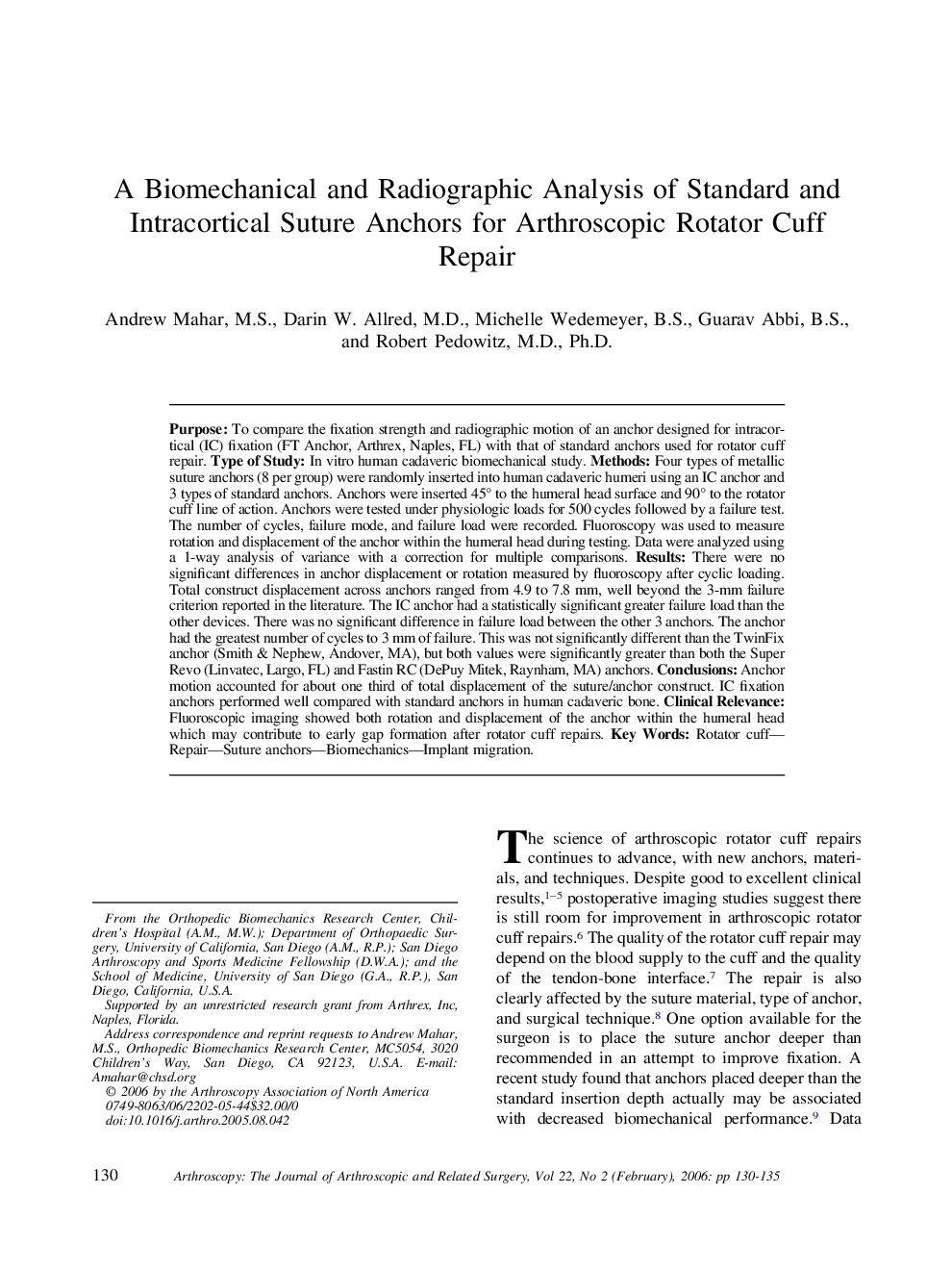| Article ID | Journal | Published Year | Pages | File Type |
|---|---|---|---|---|
| 4047315 | Arthroscopy: The Journal of Arthroscopic & Related Surgery | 2006 | 6 Pages |
Purpose: To compare the fixation strength and radiographic motion of an anchor designed for intracortical (IC) fixation (FT Anchor, Arthrex, Naples, FL) with that of standard anchors used for rotator cuff repair. Type of Study: In vitro human cadaveric biomechanical study. Methods: Four types of metallic suture anchors (8 per group) were randomly inserted into human cadaveric humeri using an IC anchor and 3 types of standard anchors. Anchors were inserted 45° to the humeral head surface and 90° to the rotator cuff line of action. Anchors were tested under physiologic loads for 500 cycles followed by a failure test. The number of cycles, failure mode, and failure load were recorded. Fluoroscopy was used to measure rotation and displacement of the anchor within the humeral head during testing. Data were analyzed using a 1-way analysis of variance with a correction for multiple comparisons. Results: There were no significant differences in anchor displacement or rotation measured by fluoroscopy after cyclic loading. Total construct displacement across anchors ranged from 4.9 to 7.8 mm, well beyond the 3-mm failure criterion reported in the literature. The IC anchor had a statistically significant greater failure load than the other devices. There was no significant difference in failure load between the other 3 anchors. The anchor had the greatest number of cycles to 3 mm of failure. This was not significantly different than the TwinFix anchor (Smith & Nephew, Andover, MA), but both values were significantly greater than both the Super Revo (Linvatec, Largo, FL) and Fastin RC (DePuy Mitek, Raynham, MA) anchors. Conclusions: Anchor motion accounted for about one third of total displacement of the suture/anchor construct. IC fixation anchors performed well compared with standard anchors in human cadaveric bone. Clinical Relevance: Fluoroscopic imaging showed both rotation and displacement of the anchor within the humeral head which may contribute to early gap formation after rotator cuff repairs.
